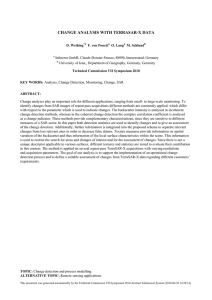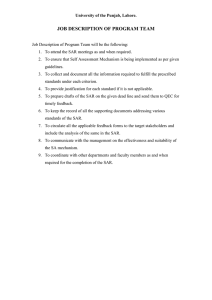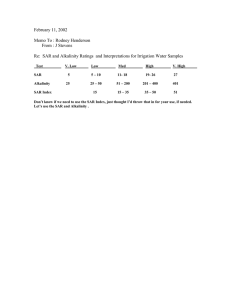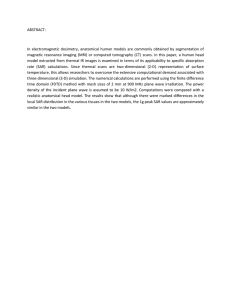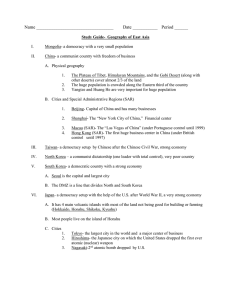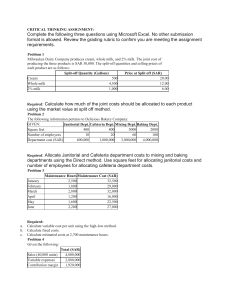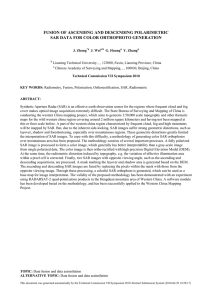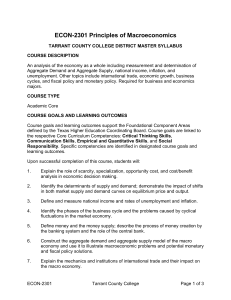TERRASAR-X BASED MAP TO IMAGE CHANGE DETECTION
advertisement
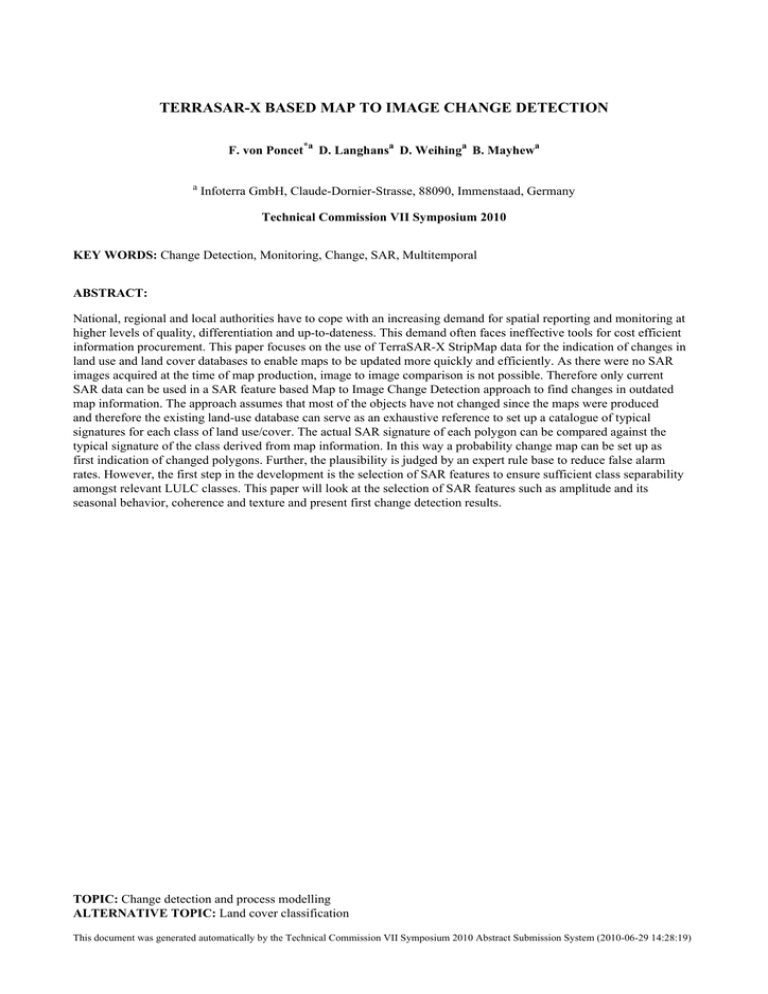
TERRASAR-X BASED MAP TO IMAGE CHANGE DETECTION F. von Poncet*a D. Langhansa D. Weihinga B. Mayhewa a Infoterra GmbH, Claude-Dornier-Strasse, 88090, Immenstaad, Germany Technical Commission VII Symposium 2010 KEY WORDS: Change Detection, Monitoring, Change, SAR, Multitemporal ABSTRACT: National, regional and local authorities have to cope with an increasing demand for spatial reporting and monitoring at higher levels of quality, differentiation and up-to-dateness. This demand often faces ineffective tools for cost efficient information procurement. This paper focuses on the use of TerraSAR-X StripMap data for the indication of changes in land use and land cover databases to enable maps to be updated more quickly and efficiently. As there were no SAR images acquired at the time of map production, image to image comparison is not possible. Therefore only current SAR data can be used in a SAR feature based Map to Image Change Detection approach to find changes in outdated map information. The approach assumes that most of the objects have not changed since the maps were produced and therefore the existing land-use database can serve as an exhaustive reference to set up a catalogue of typical signatures for each class of land use/cover. The actual SAR signature of each polygon can be compared against the typical signature of the class derived from map information. In this way a probability change map can be set up as first indication of changed polygons. Further, the plausibility is judged by an expert rule base to reduce false alarm rates. However, the first step in the development is the selection of SAR features to ensure sufficient class separability amongst relevant LULC classes. This paper will look at the selection of SAR features such as amplitude and its seasonal behavior, coherence and texture and present first change detection results. TOPIC: Change detection and process modelling ALTERNATIVE TOPIC: Land cover classification This document was generated automatically by the Technical Commission VII Symposium 2010 Abstract Submission System (2010-06-29 14:28:19)
